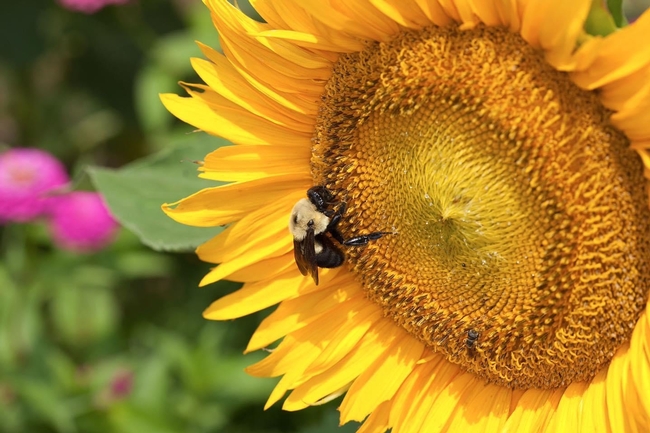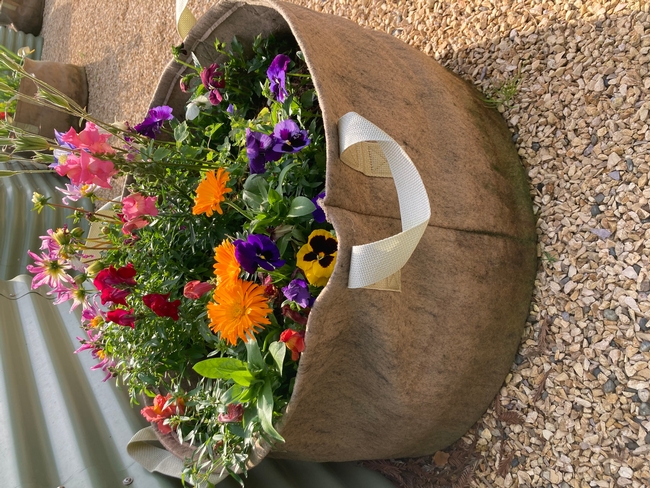
What do pollinators do?
Pollinators pollinate flowers by moving pollen from the anther (male part of a flower) to the stigma (female part of the flower), either on the same flower or a different flower. The pollinators are there to collect nectar or pollen from the flower for food. While they browse they disperse the pollen grains among the flowers, allowing the plant to reproduce.
Stone fruit, almonds, apples, squash, watermelon, and many other fruits and vegetables rely on bees for pollination. And pollinators can help self-pollinating vegetables such as tomatoes. Native bees pollinate a variety of native and non-native plants.
What can we do to help?

- Edging your vegetable bed with flowering annuals is both pleasing and beneficial. They look lovely and attract pollinators to your vegetables. (Allow your herbs to flower, rather than pinching back for increased production, to make them attractive to pollinators.)
-
Create a dedicated pollinator garden. You might focus on a garden that attracts butterflies, or one that attracts native bees.
-
While mulching provides many benefits, try to include areas of bare soil. This creates a more hospitable habitat for our ground-dwelling bees.
-
Think about replacing an ornamental plant or even a section of your lawn with plants that attract pollinators.
-
Plan for succession of blooms to provide food for the pollinators throughout the growing season. Annuals such as zinnias can be particularly useful because of their long bloom time.
Selection of pollinator magnets for Fresno County
Consider including some of the following plants in your landscape. This list is by no means exhaustive, but they have all worked in Fresno-area gardens.
-
California native annuals, perennials and trees that are easy to incorporate into the urban garden include California poppy (Eschscholzia californica), hummingbird sage (Salvia spathacea), Cleveland sage (Salvia clevelandii), yarrow (Achillea spp. – there are both native and non-native yarrow), California lilac (Ceanothus ‘Ray Hartman' does particularly well in the garden), desert willow (Chilopsis linearis), manzanita (Arctostaphylos spp. which come in all sorts of sizes), and Western redbud (Cercis occidentalis)
-
Perennial herbs, such as thyme (Thymus ssp.), oregano (Origanum vulgare), lavender (Lavandula spp.), rosemary (Rosmarinus officinalis), winter savory (Satureja montana), dill (Anethum graveolens, an annual that reseeds), rue (Ruta graveolens), and scented geranium (Pelargonium) make a great addition, planted throughout the landscape or in a dedicated herb garden,
-
Perennials: sages (Salvia spp.), lantana (Lantana camara), and butterfly bush (Buddleia davidii) are just three of many non-native perennials that attract a variety of pollinators.
-
Annuals: try easy-to-grow marigold, zinnia (Zinnia) and sweet alyssum (Lobularia maritima),
-
Trees: Japanese maple (Acer palmatum) is a bee magnet in the spring.
Read more:
Ponder, Frankie, Elkins, et al. 2013. How to Attract and Maintain Pollinators in Your Garden. ANR Publication 8498. University of California Agriculture & Natural Resources.
University of California Davis Arboretum and Public Gardens. 2018. Support Native Bees with These 10 Plants.